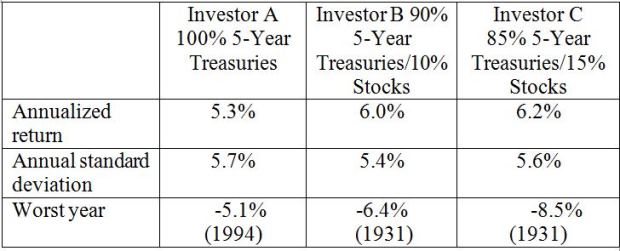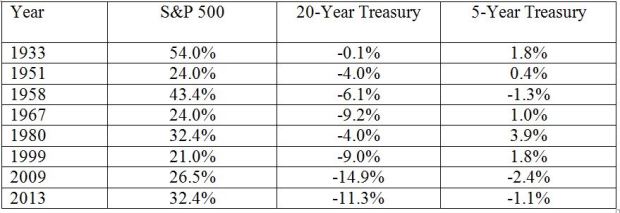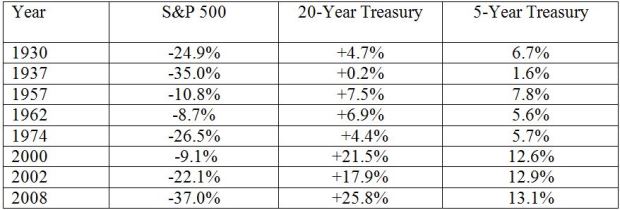Are you too conservative with your investments?
Investors' behavior can be heavily influenced by their experiences. For example, the financial crash of 1929 and the ensuing Great Depression permanently shattered many investors' belief in buying stocks. A whole cohort of potential investors stayed away from equities for a very long time, if not permanently.
Similarly, the "lost decade" of 2000-2009, when the S&P 500 stock index lost about 1 percent a year and included the financial crisis of 2008, likely caused many investors to lose faith in stocks, especially if they also believe that the game is rigged against them (as author Michael Lewis has suggested).
Market crashes and their aftermaths can cause investors to become too conservative, even abandoning stocks altogether. Those approaching or in retirement can be especially susceptible to this reaction.
One reason is that with a shorter investment horizon, you have less ability to wait out the inevitable bear markets. Another is that if you're no longer working, you don't have the same ability to replace or recover from financial losses. And a third is that your willingness to take risk, and suffer the psychological strains that bear markets can produce, is in all likelihood reduced.
Thus, it's logical for investors to lower their equity allocations when they reach, or even start approaching, the retirement stage of their lives. However, as you'll see, it's possible to become too conservative. Let's look at the historical evidence.
We begin by considering the cases of investors A, B, C and D.
- Investor A is so conservative that he invests all of his financial assets in long-term (20-year) government bonds.
- Investor B is also conservative. While he invests the majority of his financial assets in long-term government bonds, he decides to allocate a small portion, 10 percent, of his portfolio to the S&P 500 index.
- Investor C is a bit more aggressive, allocating 20 percent of his portfolio to the S&P 500 index.
- Investor D allocates 30 percent to the S&P 500 index.
We can make the following observations from these data.
- By adding a small allocation to stocks (10%), investor B earned 0.8 percent higher returns and experienced 0.5 percent less portfolio volatility than investor A. And the worst single-year loss was lower (9.1% vs. 14.9%).
- By increasing the equity allocation even further to 20 percent, investor C earned 1.3 percent higher returns. And he experienced 0.8 percent less volatility. And the worst single year was also lower (12.9% vs. 14.9%).
- By increasing the equity allocation even further to 30 percent, investor D earned 1.9 percent higher returns and experienced 0.3 percent lower volatility. However, the worst single year was a greater loss of 16.7% vs. 14.9%.
We can make the following observations from these data.
- By adding a small allocation to stocks (10%), investor B earned 0.7 percent higher returns and experienced 0.3 percent less portfolio volatility than investor A. However, the worst single-year loss was greater (6.4% vs. 5.1%).
- By increasing the equity allocation even further to 15 percent, investor C earned 0.9 percent higher returns. And he experienced 0.1 percent less volatility. And the worst single year was now a loss of 8.5% vs. 5.1%.
The bottom line is that adding a small amount of equities to an all-bond portfolio historically raises returns while actually reducing volatility. The reason is that while stocks are more volatile than bonds, they have low correlation to bonds. The annual correlation of the S&P 500 to 20-year Treasuries has been -0.07 percent, and its correlation to 5-year Treasuries was -0.3 percent.
And in many periods, bonds produce negative returns while stocks are producing strong positive returns. Consider the evidence in the following table.
Of course, as you can see in the following table, there are also periods when bonds provided a safe haven from the storms that hit equities.
Risk is more than volatility
While volatility is a measure/type of risk, it's not the only one. Becoming too conservative, because of focusing solely on minimizing volatility, can increase another type of risk -- the risk that you won't be able to achieve your financial goals, as well as the risk of depleting your financial assets while still alive.
These risks have increased for today's investors because of the very low to negative real yields now available on safe bonds. Thus, while your willingness to take risk is an important consideration in developing your investment policy statement and asset allocation plan, it should only be one of three considerations. The other two are your ability to take risk and the need to take risk.
The ability to take risk is determined by your investment horizon (the longer it is, the more ability you have to take equity risk), the stability of your labor capital (the more stable, the more ability you have to take risk), your need for liquidity to meet unplanned/emergency expenses, and what options you have available if stocks crash, putting your plan at risk (the more options you have, such as saving more, working longer, lowering your goal, moving to a lower cost of living area, the more ability you have to take risk).
The need to take risk is determined by the rate of return needed to achieve your financial goal (the higher the rate of return, the more equity risk you have to take). If you're interested in learning more about this topic, my book, "The Only Guide You'll Ever Need for the Right Financial Plan," has a detailed discussion on each of these issues.



